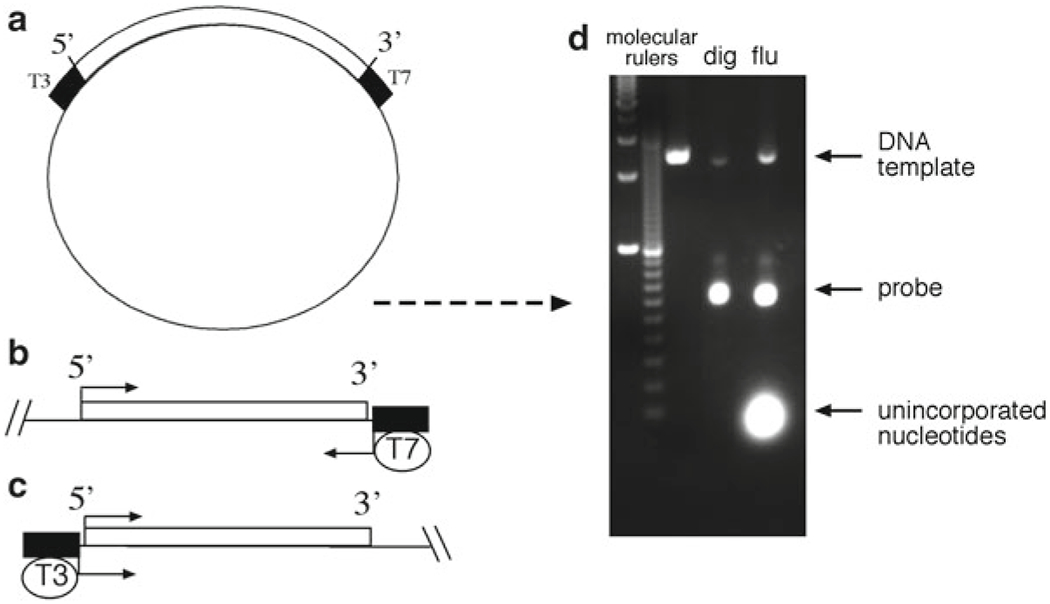Fig. 2.

Schematic illustrating the generation of the linear cDNA template and RNA probes. (a) The plasmid must contain unique restriction enzyme sites and RNA polymerase initiation sites for T7, T3, or SP6, flanking the cDNA of interest. (b) In this example, the 5′ end of the insert is digested with an appropriate restriction enzyme and then transcribed with T7 RNA polymerase to generate an antisense probe. (c) Similarly, a sense probe is generated by digesting the 3′ end with an appropriate enzyme, and transcribing with T3 polymerase. (d) Gel electrophoresis of freshly synthesized RNA probes. RNA should migrate to a position that roughly correlates with the size of the cloned insert, while fainter, slowly migrating DNA template bands should also be apparent
